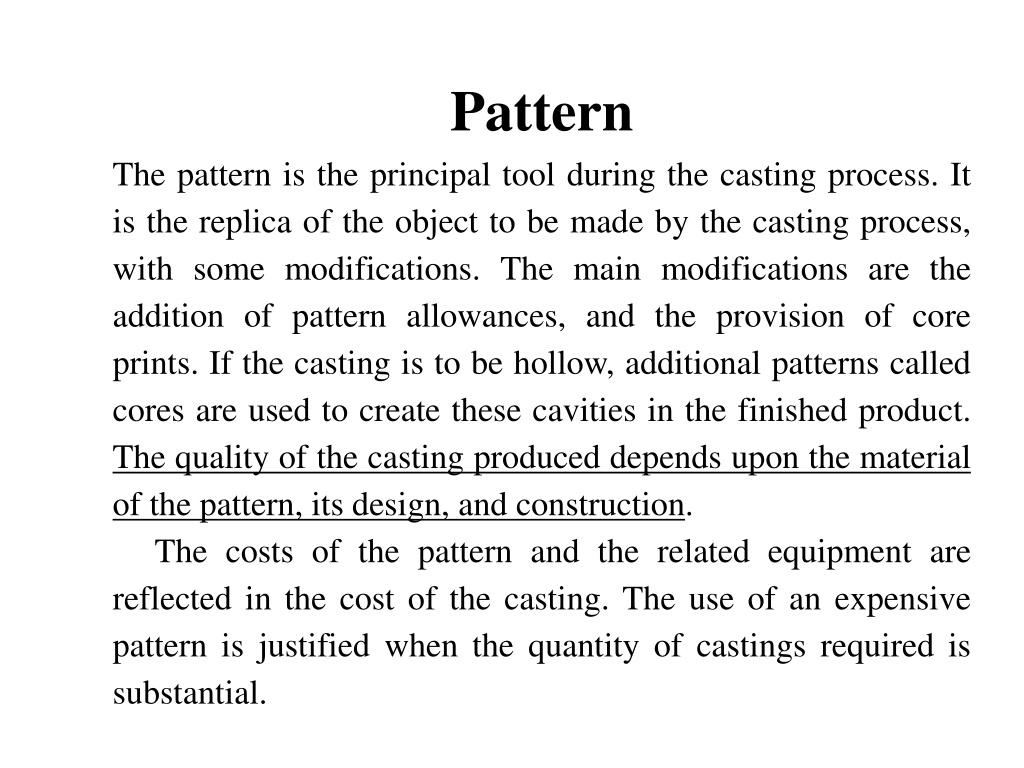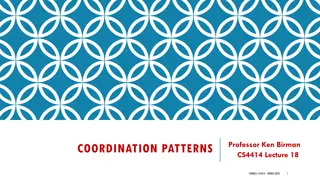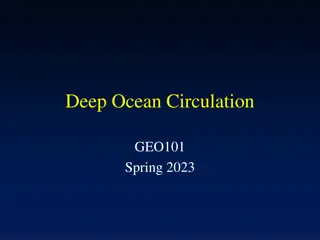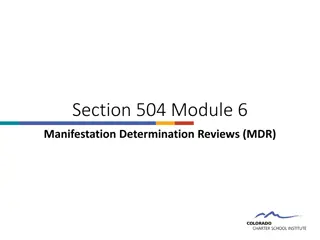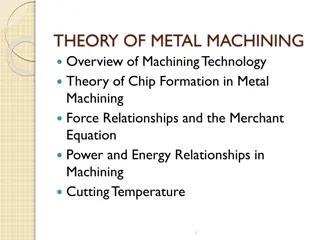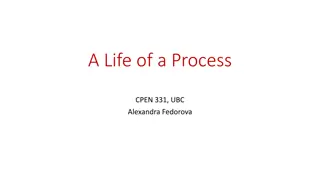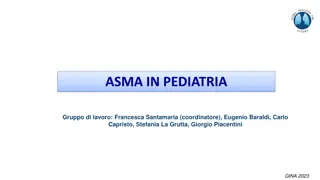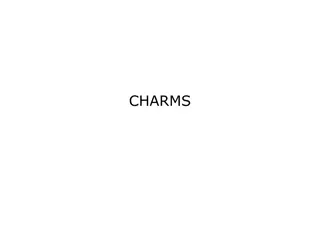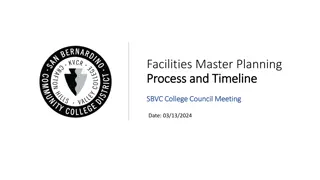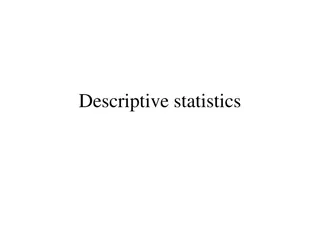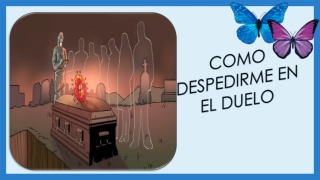Understanding Patterns in Casting Process
Patterns play a crucial role in the casting process by creating replicas of objects with modifications, such as pattern allowances and core prints. They help in forming mold cavities, reducing casting defects, and minimizing costs. Various materials like wood, metal, and plastics are used for patterns, each with its own advantages. Pattern allowances are crucial for achieving accurate dimensions in castings. Proper selection and application of allowances help in cost reduction and quality improvement.
Download Presentation
Please find below an Image/Link to download the presentation.
The content on the website is provided AS IS for your information and personal use only. It may not be sold, licensed, or shared on other websites without obtaining consent from the author. Download presentation by click this link. If you encounter any issues during the download, it is possible that the publisher has removed the file from their server.
Presentation Transcript
Pattern The pattern is the principal tool during the casting process. It is the replica of the object to be made by the casting process, with some modifications. The main modifications are the addition of pattern allowances, and the provision of core prints. If the casting is to be hollow, additional patterns called cores are used to create these cavities in the finished product. The quality of the casting produced depends upon the material of the pattern, its design, and construction. The costs of the pattern and the related equipment are reflected in the cost of the casting. The use of an expensive pattern is justified when the quantity of castings required is substantial.
Functions of the Pattern 1. A pattern prepares a mold cavity for the purpose of making a casting. 2. A pattern may contain projections known as core prints if the casting requires a core and need to be made hollow. 3. Runner, gates, and risers used for feeding molten metal in the mold cavity may form a part of the pattern. 4. Patterns properly made and having finished and smooth surfaces reduce casting defects. 5. A properly constructed pattern minimizes the overall cost of the castings.
Pattern Material Patterns may be constructed from the following materials. Each material has its own advantages, limitations, and field of application. Some materials used for making patterns are: wood, metals and alloys, plastic,plaster of Paris, plastic and rubbers, wax, and resins. To be suitable for use, the pattern material should be: 1. Easily worked, shaped and joined 2. Light in weight 3. Strong, hard and durable 4. Resistant to wear and abrasion 5. Resistant to corrosion, and to chemical reactions 6. Dimensionally stable and unaffected by variations in temperature and humidity 7. Available at low cost
The usual pattern materials are wood, metal, and plastics. The most commonly used pattern material is wood, since it is readily available and of low weight. Also, it can be easily shaped and is relatively cheap. The main disadvantage of wood is its absorption of moisture, which can cause distortion and dimensional changes. Hence, proper seasoning and upkeep of wood is almost a pre-requisite for large-scale use of wood as a pattern material.
Pattern Allowances Pattern allowance is a vital feature as it affects the dimensional characteristics of the casting. Thus, when the pattern is produced, certain allowances must be given on the sizes specified in the finished component drawing so that a casting with the particular specification can be made. The selection of correct allowances greatly helps to reduce machining costs and avoid rejections. The allowances usually considered on patterns and core boxes are as follows: 1. Shrinkage or contraction allowance 2. Draft or taper allowance 3. Machining or finish allowance 4. Distortion or camber allowance 5. Rapping allowance
All most all cast metals shrink or contract volumetrically on cooling. The metal shrinkage is of two types: i. Liquid Shrinkage: it refers to the reduction in volume when the metal changes from liquid state to solid state at the solidus temperature. To account for this shrinkage; riser, which feed the liquid metal to the casting, are provided in the mold. ii. Solid Shrinkage: it refers to the reduction in volume caused when metal loses temperature in solid state. To account for this, shrinkage allowance is provided on the patterns. The rate of contraction with temperature is dependent on the material. For example steel contracts to a higher degree compared to aluminum. To compensate the solid shrinkage, a shrink rule must be used in laying out the measurements for the pattern. A shrink rule for cast iron is 1/8 inch longer per foot than a standard rule. If a gear blank of 4 inch in diameter was planned to produce out of cast iron, the shrink rule in measuring it 4 inch would actually measure 4 -1/24 inch, thus compensating for the shrinkage. The various rate of contraction of various materials are given in Table 1.
Material Dimension Shrinkage allowance (inch/ft) Approximately SI metric Approximately English Unit (inch/ft) Grey Cast Iron Up to 2 feet 2 feet to 4 feet over 4 feet 0.125 0.105 0.083 1.04% 1/8 Cast Steel Up to 2 feet 2 feet to 6 feet over 6 feet 0.251 0.191 0.155 2.08% 1/4 Aluminum Up to 4 feet 4 feet to 6 feet over 6 feet 0.155 0.143 0.125 1.302% 5/32 Magnesium Up to 4 feet Over 4 feet 0.173 0.155 1.302% 5/32 brass Up to 2 feet 2 feet to 6 feet over 6 feet 0.251 0.191 0.155 3.125% 3/8
Exercise 1 The casting shown is to be made in cast iron using a wooden pattern. Assuming only shrinkage allowance, calculate the dimension of the pattern. All Dimensions are in Inches Solution 1 The shrinkage allowance for cast iron for size up to 2 feet is o.125 inch per feet (as per Table 1) For dimension 18 inch, allowance = 18 X 0.125 / 12 = 0.1875 inch 0.2 inch For dimension 14 inch, allowance = 14 X 0.125 / 12 = 0.146 inch 0.15 inch For dimension 8 inch, allowance = 8 X 0.125 / 12 = 0.0833 inch 0. 09 inch For dimension 6 inch, allowance = 6 X 0.125 / 12 = 0.0625 inch 0. 07 inch
Draft or Taper Allowance By draft is meant the taper provided by the pattern maker on all vertical surfaces of the pattern so that it can be removed from the sand without tearing away the sides of the sand mold and without excessive rapping by the molder. Figure 3 (a) shows a pattern having no draft allowance being removed from the pattern. In this case, till the pattern is completely lifted out, its sides will remain in contact with the walls of the mold, thus tending to break it. Figure 3 (b) is an illustration of a pattern having proper draft allowance. Here, the moment the pattern lifting commences, all of its surfaces are well away from the sand surface. Thus the pattern can be removed without damaging the mold cavity.
Draft allowance varies with the complexity of the sand job. But in general inner details of the pattern require higher draft than outer surfaces. The amount of draft depends upon the length of the vertical side of the pattern to be extracted; the intricacy of the pattern; the method of molding; and pattern material. Table 2 provides a general guide lines for the draft allowance Pattern material Height of the given surface (inch) 1 1 to 2 2 to 4 4 to 8 8 to 32 1 1 to 2 2 to 4 4 to 8 8 to 32 Draft angle (External surface) Draft angle (Internal surface) 3.00 1.50 1.00 0.75 0.50 1.50 1.00 0.75 0.50 0.50 3.00 2.50 1.50 1.00 1.00 3.00 2.00 1.00 1.00 0.75 Wood Metal and plastic
Machining or Finish Allowance The finish and accuracy achieved in sand casting are generally poor and therefore when the casting is functionally required to be of good surface finish or dimensionally accurate, it is generally achieved by subsequent machining. Machining or finish allowances are therefore added in the pattern dimension. The amount of machining allowance to be provided for isaffected bythe method of molding and casting used viz. hand molding or machine molding, sand casting or metal mold casting. The amount of machining allowance is also affected by the size and shape of the casting; the casting orientation; the metal; and the degree of accuracy and finish required. The machining allowances recommended for different metal is given in Table 3. Metal Dimension (inch) Up to 12 12 to 20 20 to 40 Up to 6 6 to 20 20 to 40 Up to 8 8 to 12 12 to 40 Allowance (inch) 0.12 0.20 0.25 0.12 0.25 0.30 0.09 0.12 0.16 Cast iron Cast steel Non ferrous
Exercise 2 The casting shown is to be made in cast iron using a wooden pattern. Assuming only machining allowance, calculate the dimension of the pattern. All Dimensions are in Inches Solution 2 The machining allowance for cast iron for size, up to 12 inch is o.12 inch and from 12 inch to 20 inch is 0.20 inch (Table 3) For dimension 18 inch, allowance = 0.20 inch For dimension 14 inch, allowance = 0.20 inch For dimension 8 inch, allowance = 0.12 inch For dimension 6 inch, allowance = 0.12 inch
Distortion or Camber Allowance Sometimes castings get distorted, during solidification, due to their typical shape. For example, if the casting has the form of the letter U, V, T, or L etc. it will tend to contract at the closed end causing the vertical legs to look slightly inclined. This can be prevented by making the legs of the U, V, T, or L shaped pattern converge slightly (inward) so that the casting after distortion will have its sides vertical (Figure 4). The distortion in casting may occur due to internal stresses. These internal stresses are caused on account of unequal cooling of different section of the casting and hindered contraction. Measure taken to prevent the distortion in casting include: i. Modification of casting design ii. Providing sufficient machining allowance to cover the distortion affect iii. Providing suitable allowance on the pattern, called camber or distortion allowance (inverse reflection)
Rapping Allowance Before the withdrawal from the sand mold, the pattern is rapped all around the vertical faces to enlarge the mold cavity slightly, which facilitate its removal. Since it enlarges the final casting made, it is desirable that the original pattern dimension should be reduced to account for this increase. There is no sure way of quantifying this allowance, since it is highly dependent on the foundry personnel practice involved. It is a negative allowance and is to be applied only to those dimensions that are parallel to the parting plane.
Core and Core Prints Castings are often required to have holes, recesses, etc. of various sizes and shapes. These impressions can be obtained by using cores. So where coring is required, provision should be made to support the core inside the mold cavity. Core prints are used to serve this purpose. The core print is an added projection on the pattern and it forms a seat in the mold on which the sand core rests during pouring of the mold. The core print must be of adequate size and shape so that it can support the weight of the core during the casting operation. Depending upon the requirement a core can be placed horizontal, vertical and can be hanged inside the mold cavity. A typical job, its pattern and the mold cavity with core and core print is shown in Figure 5.
